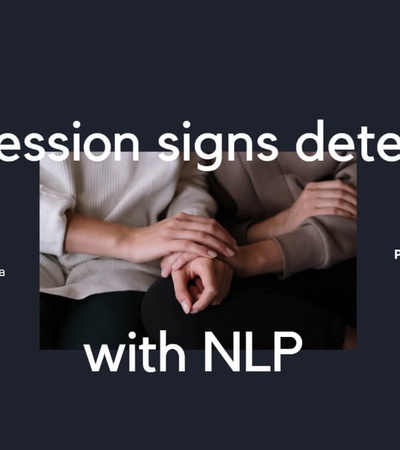
My name is Paula García and I recently graduated from the Bachelor in Data & Business Analytics program at IE University. At the beginning of my fourth year in the program, I started thinking about where my future would lead. A thought that kept coming to mind was that I wanted to use the data knowledge I acquired throughout the program to create a lasting impact. My Capstone Project was centered around detecting signs of depression in social media and offering tangible solutions.
Paula García was captivated by data and its power from day one of her Bachelor in Data & Business Analytics. As the program continued and she began to think about her future, she soon realized that she could use data to make a lasting impact on the lives of others. So when it came time to select her Capstone Project, she immediately knew that she wanted to use natural language processing (NLP) to analyze text and drive a data solution for the greater good.
With the support of data science expert and IE University professor, Noa Cruz, Paula was ready to begin her Capstone Project journey. She found out about an ongoing competition in CodaLab whose goal was to develop new, more efficient ways to detect depression indicators on social media—Paula’s attention was immediately piqued.
She began to explore the options at hand, specifically focusing on how artificial intelligence (AI) algorithms could be applied to detect signs of depression from text written in English on social media posts and stories. Paula continued her exploration by conducting experiments in classic machine learning, deep learning and transfer learning algorithms in order to find patterns and solve the challenge.
OBTAINING RESULTS
Once Paula gathered her results from the three model categories, she was able to select the best option for the task at hand. And according to Paula, when speaking about mental health disorders detection, transparency is key. Thus, she chose the model that would offer end users the highest interpretability possible: a tree-based model.
Creating a depression detector would only be beneficial to Paula if she could find a way to ensure that it was user-friendly. So, she decided to create a website using the model she chose—a website where any average user could test the solution over their desired text, regardless of their programming capabilities.
THE STORY CONTINUES
After graduation, Paula went on to work as a business analyst at Celonis, meaning she had to place her project on the back burner as a personal endeavor. However, as this cause is incredibly important to her and she believes in the potential of the solution she created , Paula decided to donate her idea and research to SoGoodData —a Spanish NGO that aims to solve social issues by applying data science techniques.
Paula’s goal of creating a positive impact continues to live on and she is thrilled about the possibilities unlocked by her innovative solution. She’s confident in the team of researchers at So Good Data and is looking forward to where the project will lead.